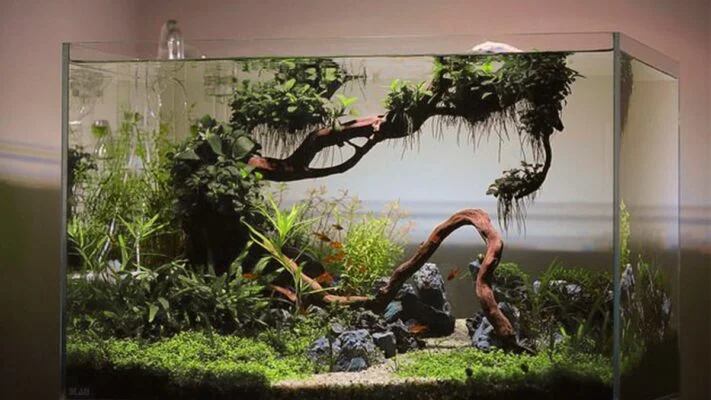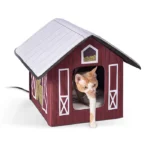A 10 gallon fish tank might seem small at first glance, but don’t be fooled—it offers an exciting challenge for aquarists of all levels. Whether you’re a beginner looking for your first aquarium or a hobbyist seeking a compact setup, this size tank offers just the right blend of simplicity and creativity.
In this post, we’ll dive into the ins and outs of choosing, setting up, and maintaining a 10 gallon fish tank, while uncovering expert insights, personal tips, and realistic expectations to help you get it right the first time.
Table of Contents
Why Choose a 10 Gallon Fish Tank?
When people begin researching aquariums, the 10 gallon fish tank often stands out as a practical choice. Here’s why:
1. Perfect Balance Between Size and Simplicity
A 10 gallon fish tank is large enough to host a small community of aquatic life but still small enough to fit on a desk, counter, or shelf. It’s ideal for bedrooms, apartments, or office spaces.
2. Beginner-Friendly Learning Curve
This size provides just enough water volume to create a stable environment while remaining manageable for first-timers. You get the opportunity to learn key skills like cycling, water testing, and filtration without being overwhelmed.
3. Budget-Conscious Option
Compared to larger tanks, a 10 gallon setup is generally affordable—both in terms of initial investment and ongoing maintenance. It’s a great starting point for anyone wanting to dip their toes into the aquarium hobby without draining their wallet.

What Can You Keep in a 10 Gallon Fish Tank?
This is the most common question—and the most critical one. The tank’s capacity limits what species and how many of them you can keep.
Fish Options (Choose One Stocking Plan)
Plan A: Betta Sorority (Caution Required)
- 3-4 female bettas (requires expert attention and backup tanks)
- Heavily planted tank with hiding spots
Plan B: Nano Community Tank
- 6 Neon Tetras
- 4 Cherry Shrimp
- 2 Nerite Snails
Plan C: Single Species Focus
- 1 Betta (male or female)
- 5 Ember Tetras
- Live plants like Java Fern and Anubias
Plan D: Shrimp-Only Setup
- 10-15 Cherry Shrimp
- Moss balls, driftwood, and java moss
Important Note:
Avoid the temptation to overcrowd. Overstocking leads to stress, disease, and water quality issues. Always research the adult size and temperament of fish before making choices.
Comparing a 10 Gallon Fish Tank to Other Sizes
| Feature | 5 Gallon | 10 Gallon | 20 Gallon |
|---|---|---|---|
| Beginner-Friendly | Yes (limited species) | Yes (more options) | Yes (even more stable) |
| Cost | Low | Moderate | Higher initial cost |
| Maintenance | Frequent (small volume) | Manageable | More forgiving |
| Fish Variety | Very limited | Small community possible | Wider range available |
| Ideal Use | Betta, shrimp | Nano community tank | Community aquarium |
While 5 gallon tanks are cute and compact, the 10 gallon fish tank offers a bit more flexibility without the complexity of a 20 gallon setup. It’s truly the sweet spot for many hobbyists.
Essential Equipment for Your 10 Gallon Aquarium
You can’t just add water and fish and call it done. A 10 gallon fish tank still requires the right equipment to create a safe and stable environment.
1. Filter
A sponge or hang-on-back (HOB) filter is perfect for this tank size. Make sure it’s rated for 10 gallons and adjustable to avoid creating strong currents that stress your fish.
2. Heater
Depending on the fish species you choose, a heater may be essential. Most tropical fish need stable temperatures between 75–80°F.
3. Lighting
Choose LED lights that won’t overheat the water. If you plan on keeping live plants, make sure the light spectrum supports plant growth.
4. Substrate
Gravel or sand works well. For planted tanks, consider nutrient-rich substrates like Fluval Stratum.
5. Test Kits
Regular testing is critical. Invest in a reliable water test kit to monitor ammonia, nitrites, nitrates, and pH.
Setting Up a 10 Gallon Fish Tank: Step-by-Step
Here’s a simplified process to help you set up your 10 gallon aquarium correctly:
Step 1: Placement & Cleaning
- Place the tank on a sturdy, level surface.
- Avoid direct sunlight to reduce algae growth.
- Rinse the tank with warm water (no soap).
Step 2: Add Substrate & Decorations
- Layer 1-2 inches of substrate.
- Add rocks, driftwood, and plants.
- Secure decorations to prevent tipping.
Step 3: Install Equipment
- Set up the filter and heater.
- Place the thermometer in a visible area.
- Attach lighting and adjust timer (8-10 hours/day for planted tanks).
Step 4: Fill With Water
- Use dechlorinated tap water.
- Slowly pour water over a plate to avoid disturbing the substrate.
- Turn on your equipment and let it run for 24 hours.
Step 5: Cycle the Tank
This step is crucial. Establishing a nitrogen cycle ensures your tank can process fish waste safely. Cycling typically takes 4–6 weeks. Use bottled bacteria or ammonia sources to jumpstart the cycle.
Realistic Expectations & Challenges
A common mistake is underestimating the commitment required. Even with a 10 gallon fish tank, the ecosystem needs regular attention.
Water Changes
Plan on doing 20–30% weekly water changes to maintain water quality.
Overfeeding
Avoid feeding more than your fish can eat in 2 minutes. Excess food causes ammonia spikes.
Algae Growth
Too much light or nutrients can result in algae problems. Control with consistent lighting and avoid overstocking.
Unique Insights from Real Hobbyists
After years of keeping various tank sizes, I can confidently say the 10 gallon fish tank taught me the most.
Here are some lesser-known insights:
- Silence Is Golden: Cheap filters can be loud. Invest in quiet tech—it makes a huge difference, especially if the tank is in your bedroom or office.
- Avoid Mixing Temperaments: A small space magnifies conflict. Pairing a Betta with guppies or fin-nipping species is a common error.
- Go Planted: Live plants don’t just look good—they stabilize water parameters and reduce stress for fish.
- Don’t Rush Stocking: Let the tank mature for at least a week or two post-cycling before adding all fish.
Maintenance Tips for Long-Term Success
Here’s how to keep your 10 gallon fish tank thriving:
- Weekly Tasks: Test water, change 20–30%, clean glass, check filter flow.
- Monthly Tasks: Rinse filter media in old tank water, trim plants, inspect equipment.
- Seasonal Tasks: Deep clean decorations, check heater calibration.
Small tanks can crash quickly if ignored—even a missed water change can spike toxins. But with a little consistency, your tank will flourish.
Popular 10 Gallon Fish Tank Kits (Reviewed)
Many brands offer all-in-one kits. Here are a few that stand out:
Aqueon LED 10 Gallon Aquarium Kit
- Includes filter, LED light hood, and preset heater
- Reliable and beginner-friendly
Marina LED Aquarium Kit
- Sleek design, quiet filter, and clear setup instructions
- Excellent for planted tanks
GloFish Aquarium Kit
- Great for a vibrant, glowing theme
- Comes with color-enhancing LED lighting
Note: These kits may require upgrades (e.g., better filter or heater) for optimal performance.
Common Mistakes to Avoid
Even well-meaning aquarists can fall into traps. Watch out for:
- Skipping the Cycle: Adding fish before cycling leads to fish loss. Patience pays off.
- Overcleaning: Don’t scrub beneficial bacteria off everything. Just rinse gently.
- Overstocking: Less is more—happy fish need space to swim and hide.
- Ignoring Compatibility: Not all fish get along in tight quarters.
Final Thoughts: Is a 10 Gallon Fish Tank Right for You?
If you’re looking for a manageable, affordable, and rewarding aquarium setup, a 10 gallon fish tank might be your ideal match. It offers a blend of creativity, responsibility, and beauty that makes it perfect for homes, classrooms, and workspaces.
While the tank’s size requires careful planning and restraint, its potential is impressive. From lush planted aquascapes to vibrant nano communities, this tank size continues to be a favorite in the aquarium world for good reason.



